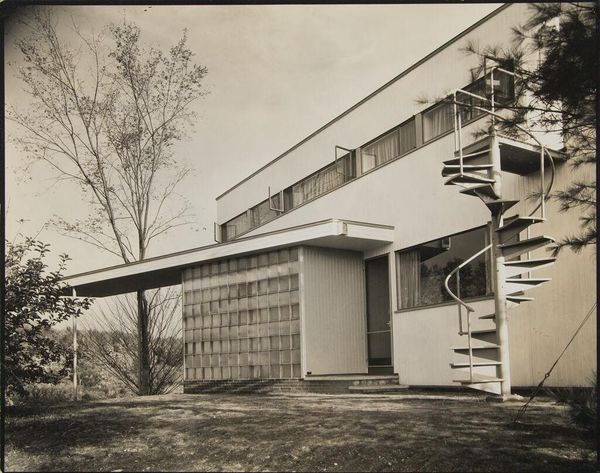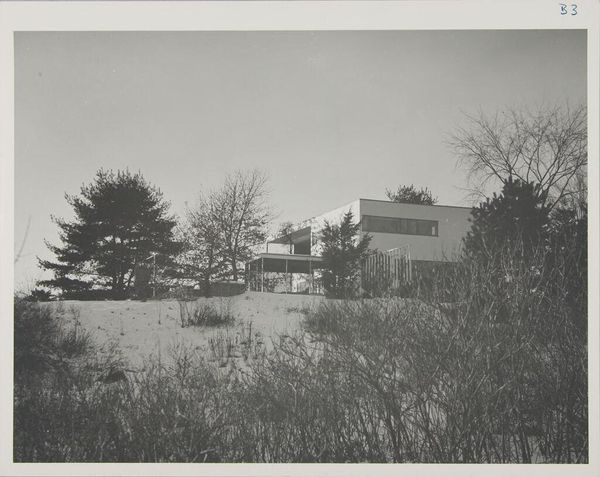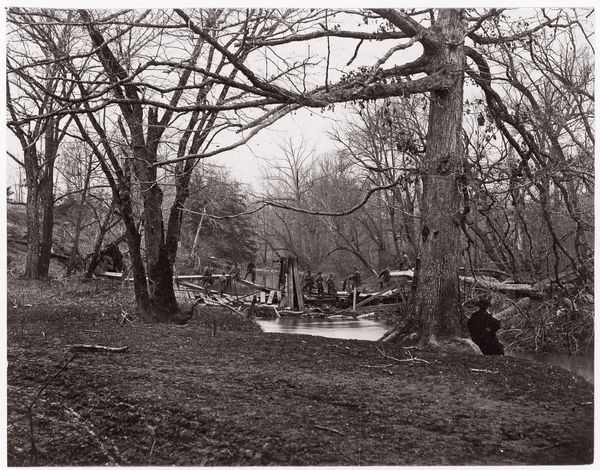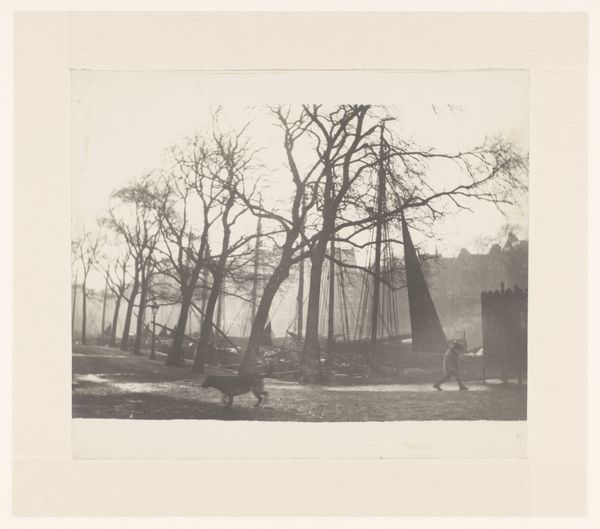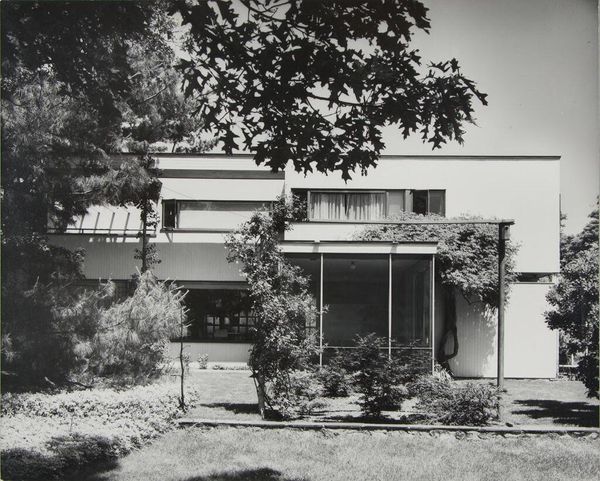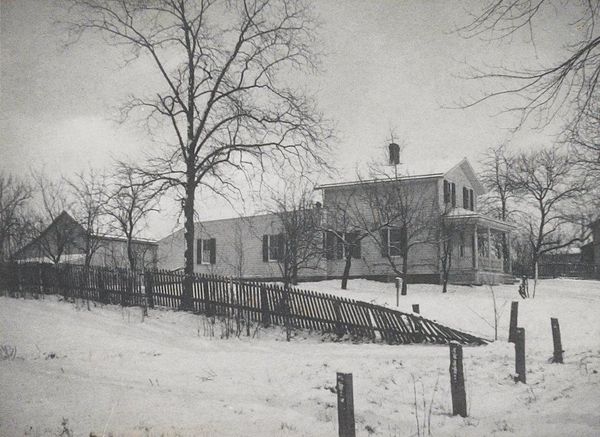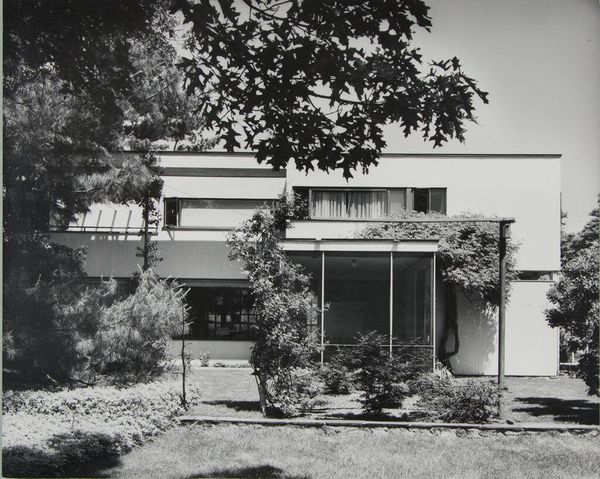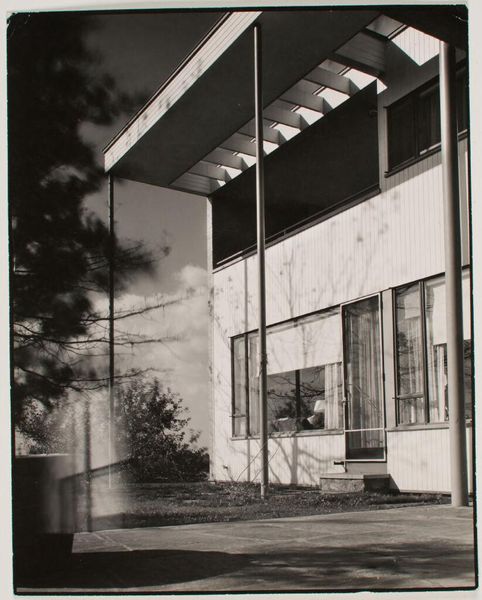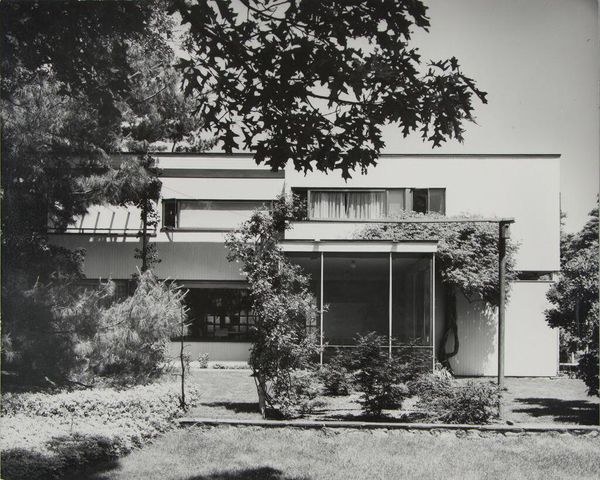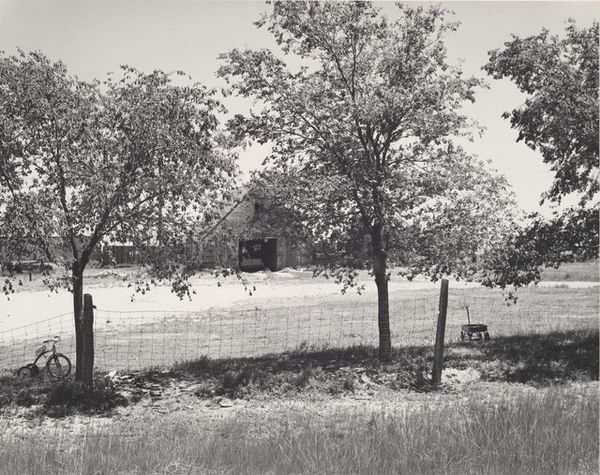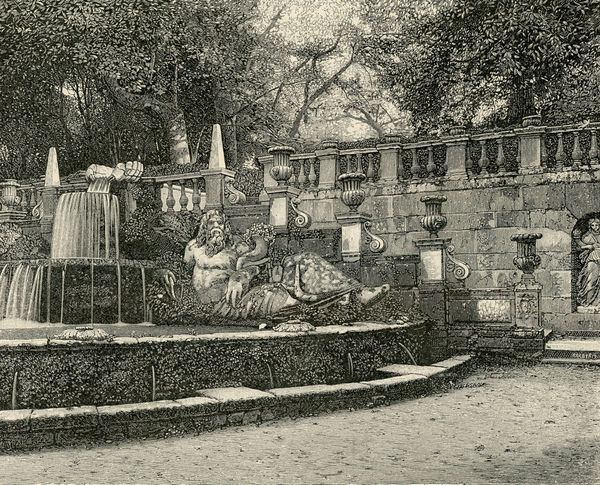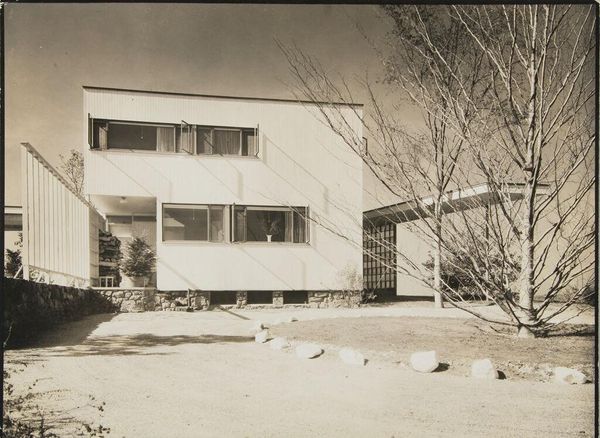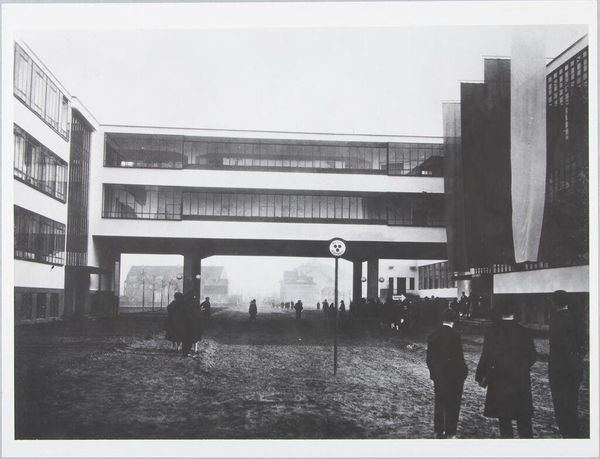
Dimensions: image: 413 x 574 mm
Copyright: © Thomas Struth | CC-BY-NC-ND 4.0 DEED, Photo: Tate
Editor: Thomas Struth's photograph, "Graves at the Sophienkirche, Grosse Hamburger Strasse, Berlin 1992," presents a somber scene. What symbols or cultural memories do you see embedded within it? Curator: The photograph’s starkness and the bare trees evoke a sense of loss. The looming building in the background contrasts sharply with the graves, suggesting the relentless march of time and the enduring presence of history, specifically the scars of Berlin's past. Do you see any other visual echoes? Editor: The composition, particularly the building's monolithic presence, feels almost oppressive. Curator: Indeed. The graves themselves, reminders of individual lives, stand against the imposing architecture. It’s a powerful meditation on memory, mortality, and the weight of history on the landscape and on the human psyche. Editor: It definitely makes you think about how the past continues to shape our present.
Comments
tate 7 months ago
⋮
http://www.tate.org.uk/art/artworks/struth-graves-at-the-sophienkirche-grosse-hamburger-strasse-berlin-1992-p20159
Join the conversation
Join millions of artists and users on Artera today and experience the ultimate creative platform.
tate 7 months ago
⋮
Thomas Struth began taking photographs of industrialised cities when he was studying under Bernd Becher (born 1931) at the Düsseldorf Academy in the late 1970s. He has continued to explore and develop the theme for almost twenty years, focusing his attention on such cities as New York, Tokyo, Berlin and Naples. Since the mid 1980s he has also produced landscapes, portraits and photographs of visitors in museums. Struth's images of the urban environment concentrate on seemingly unspectacular streets and public spaces. He seeks to record the face of urban space, seeing the architectural environment as a site where a community expresses its history and identity. In interviews he has stated that his images aim to explore what public spaces 'might say about the people who live in these sites.' (Quoted in Gisbourne p.5.) In recording the urban environment, Struth deliberately refers to the tradition of black and white documentary photography, adopting a seemingly objective position. The compositions are simple and the photographs are neither staged nor digitally manipulated in post-production. Struth has said: 'for me it is more interesting to try and find out something from the real than to throw something subjective in front of the audience.' (Quoted in Minelli p.190.) However, in spite of a link to the reportage tradition, Struth avoids both its snapshot approach and its quest for the capture of a fleeting, spontaneous image. Rather he carefully selects the sites where, using long exposures he makes sharply focused images. In 1991, two years after the unification of East and West Berlin, Struth began working on an extensive series of images that sought to record the face of the former East Germany, (of which Tate owns five). He travelled the country, taking photographs in a variety of cities which had previously been inaccessible from the West. Graves at Sophienkirche, Grosse Hamburger Strasse, Berlin 1992 is an image of an empty graveyard taken in winter. Struth employs techniques which have characterised the cityscapes since the 1970s, the camera having been placed at eye level in the centre of the image. The viewer's gaze is led along the brick wall that runs diagonally from right to left, past an imposing funeral monument and some leafless trees, to the buildings in the background. Struth avoids all human activity and incident, the graveyard being deserted like an empty stage-set. The image has a melancholic atmosphere of absence. The neutral grey light of early morning and the blank, inexpressive walls enhance the stark mood of the photograph, as does the subject which evokes the transience of human life. The slightly shabby East German world that Struth depicts is one in which time is presented as having stood still. It is a world at once recognisable, but also alien because it had been hidden from Western eyes for forty years. The uninflected image gives no hints as to how it is to be interpreted, and the viewer is led to linger over what might otherwise seem an un-noteworthy, everyday vista. As Struth has said, his work is intended to 'give pause', and thus resist immediate consumption. He seeks to bring about a 'move to investigative viewing' which is also a 'call to interact.' (Quoted in Buchloh p.31.) Further Reading: Mark Gisbourne, 'Struth', Art Monthly, no.176, May 1994, pp.3-9Giovanna Minelli, Another Objectivity, exhibition catalogue, Centre National des Arts Plastiques, Paris 1989, pp.189-194Benjamin Buchloh, Portraits: Thomas Struth, exhibition catalogue, Marian Goodman Gallery, New York 1990Thomas Struth: Strangers and Friends, exhibition catalogue, Institute of Contemporary Art, London 1994, reproduced p.63 Imogen Cornwall-JonesAugust 2001
